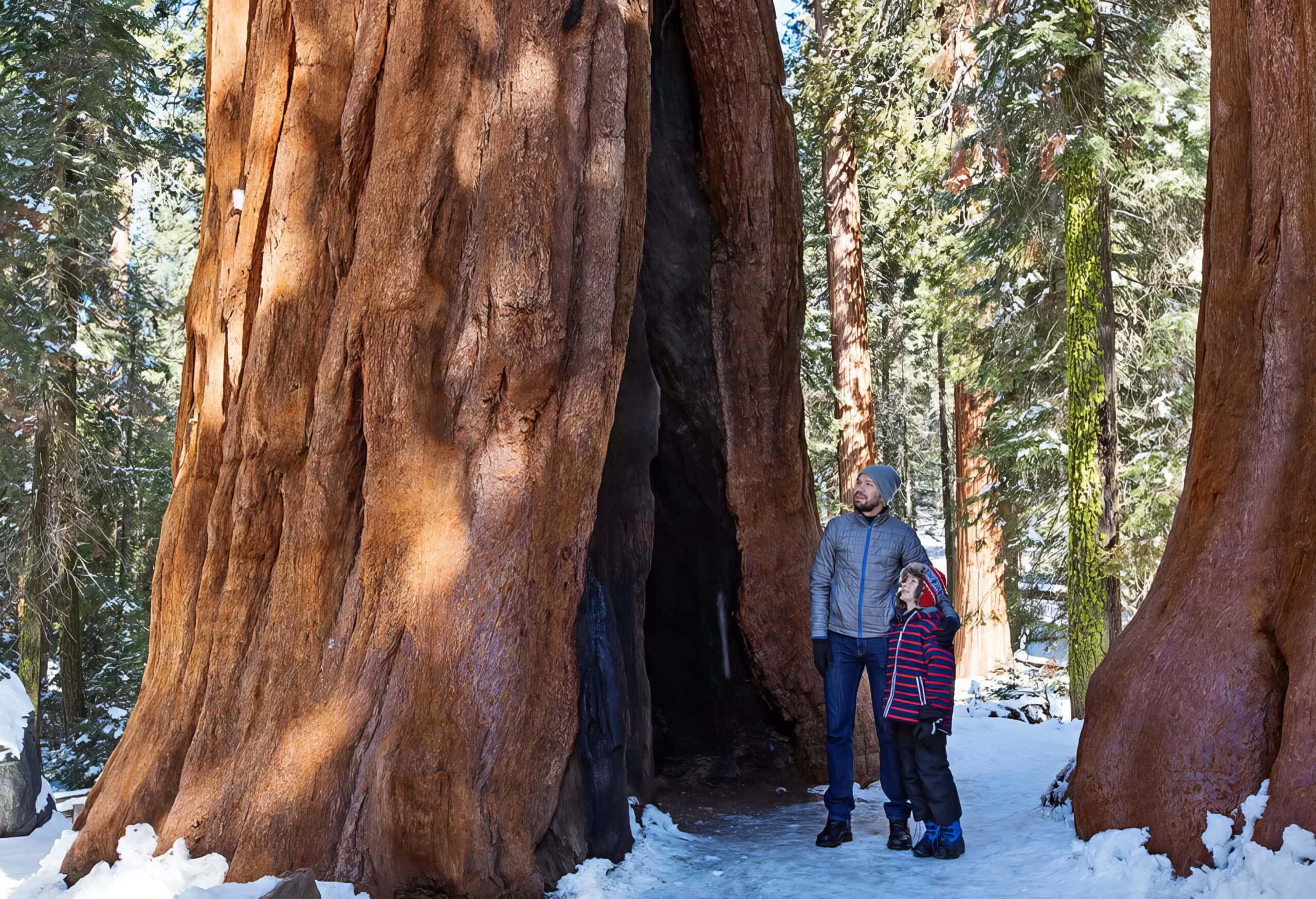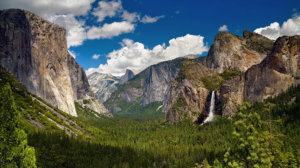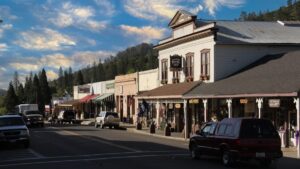By the time winter storms grace Yosemite with its first snowfall, most of the Park’s annual visitors have come and gone. However, many of the most beloved locales — such as the Mariposa Grove of Giant Sequoias — remain open and reachable by ski or snowshoes for the ultimate winter discovery.
Ever-ethereal in winter, the Mariposa Grove of Giant Sequoias is one of Yosemite’s highlight-reel settings. Tucked just inside Yosemite’s south entrance on Highway 41, this big-tree hub kisses the clouds with some 500 supersize Sequoiadendron giganteum specimens. When Mariposa Grove Road closes to cars from late November until April, it opens to snowshoers and skiers. And, with significantly fewer people visiting in the winter, the crunch of your snowshoes may be the only sound you hear.
Gearing Up for the Giants
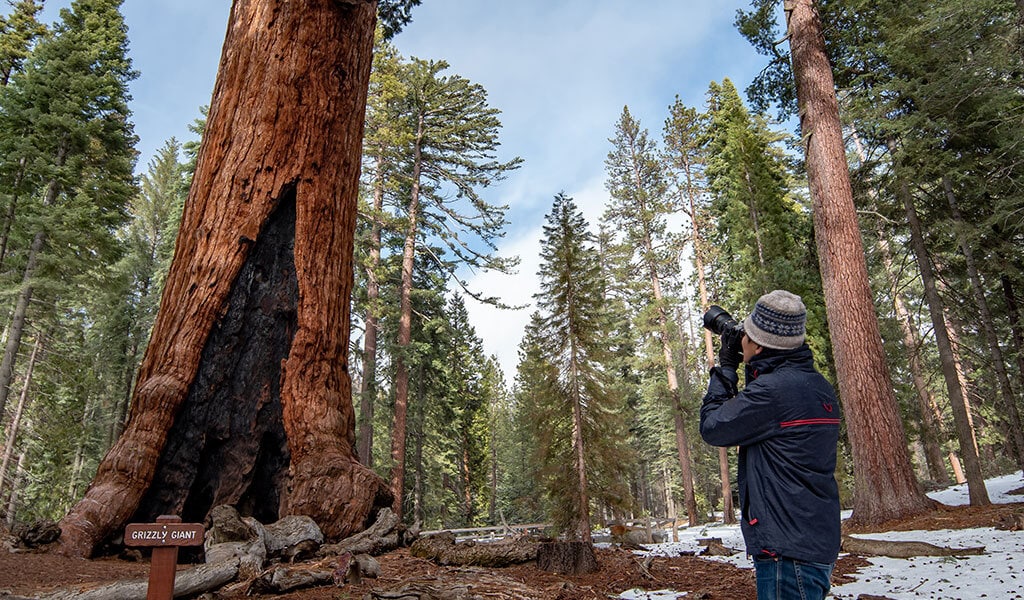
Winter adventures always require a little more planning and preparation. Mariposa Grove trails will likely be covered in snow and ice yet are easily trekkable with snowshoes (or cross-country skis). If you don’t already have your own snowshoes or ski gear, you can rent them at the Nordic Center at Badger Pass Ski and Snowboard Area. And don’t forget to ask for poles, essential when the snowpack gets deep and the going gets more challenging.
Snowshoeing at elevation is a workout, so wearing layers is the best practice. Waterproof shell jacket and pants (preferred over ski or snowboard pants) to stay dry, waterproof snow boots, and a beanie will set you free.
Pack plenty of water and trail snacks for fuel, and plan for weather – even though it may be crystal-clear, winter storms can roll in quickly in the Sierra Nevada. Consult your weather app before setting off. There are toilets available at the parking area, about halfway between the parking area and the lower sequoia grove, and near the Grizzly Giant.
Getting There, Strapping In
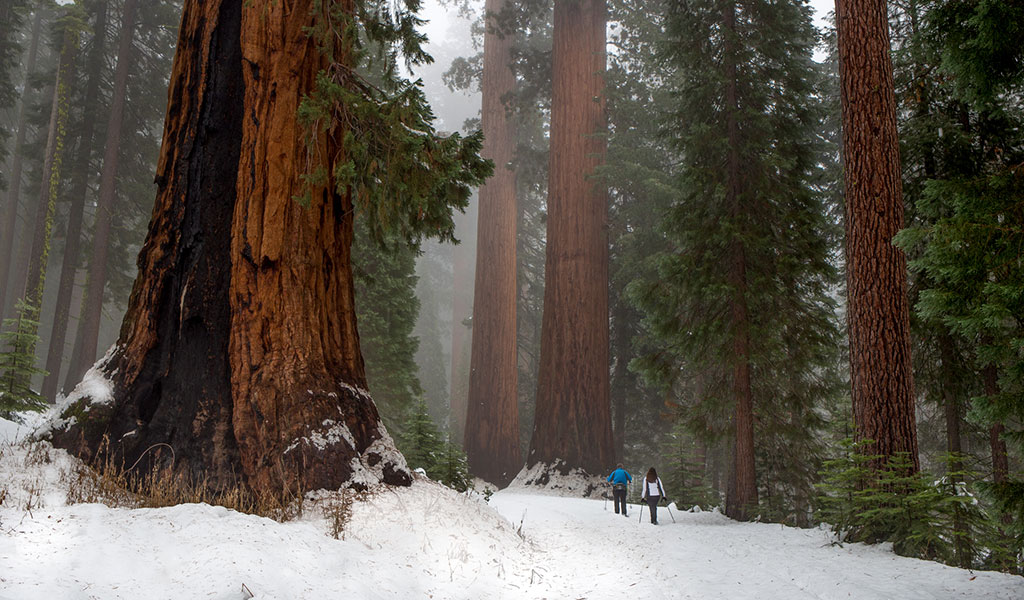
Parking is provided in the lower parking area just off Highway 41, near the South Gate at the end of the plowed road. Begin your journey to the Mariposa Grove from here via the Washburn Trail, or simply follow the closed Mariposa Grove Road for a slightly easier path.
The Washburn Trail, named for the Yosemite pioneering Washburn family, follows roughly parallel to Mariposa Grove Road from the end of the parking area. From here, it’s a two-mile hike to the Grove arrival area, with a 500-ft. elevation gain that starts at about 5,600 feet. Trail math means your hike will be four miles round-trip, plus the distance you elect to hike into the grove.
Look for the iconic Mariposa Grove of Giant Sequoias sign near the Welcome Plaza. Take that selfie or ussie, and tag #YosemiteNation to get in the flow. From here, the easiest snowshoe path to the superstar trees is via the Big Trees Loop Trail. First up is the Fallen Monarch, which would be one of the larger trees in the Grove were it still standing. Since Giant Sequoias are highly resistant to decay, the Fallen Monarch is still well-preserved, more than 300 years after its demise (likely due to fire). Take advantage of the great photo op in front of its gnarly, Medusa-like base.
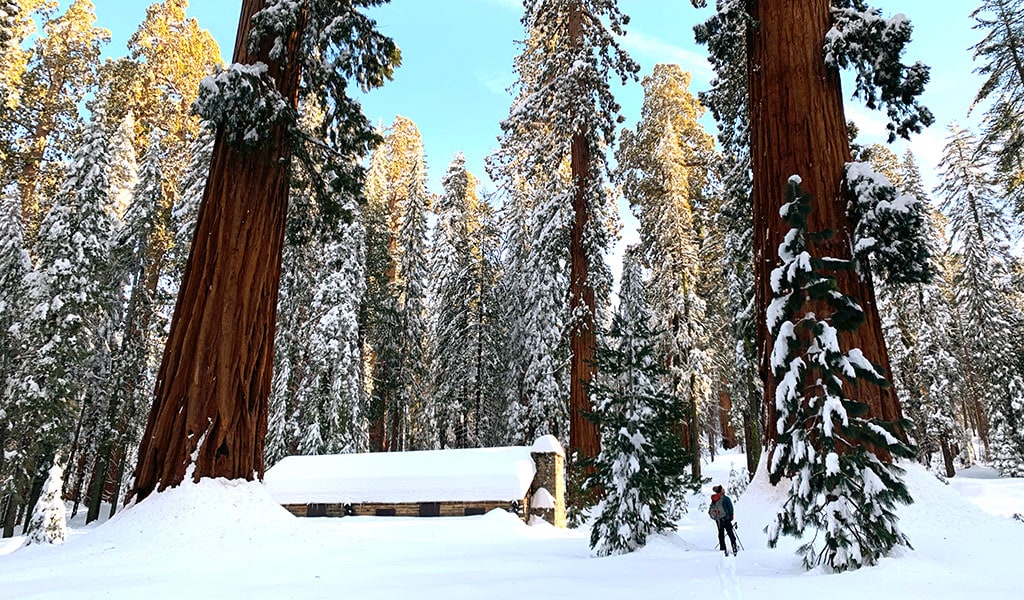
From the Big Trees Loop Trail, the Grizzly Giant Loop Trail spurs off to the right. This short, sweet, and relatively flat path is worth every snowy step. Here you will encounter a parade of majestic superflora: the Bachelor & Three Graces, Grizzly Giant, and California Tunnel Tree.
The Bachelor & Three Graces is a quartet growing so closely together, their root systems are intertwined. The root systems of these titanic trees grow out, not down, and can reach hundreds of feet from their trunks. If one of the Graces or the Bachelor falls, it is speculated that all four of these tightly-grouped trees could come crashing down.
The California Tunnel Tree is Mariposa Grove’s version of Survivor. A rectangular cut was made in its base in 1895 to allow horse-drawn stages with tourists to pass through it! Those were different days… and despite this cruel and unusual treatment, the California Tunnel Tree is still alive and standing.
The Grizzly Giant is the undefeated champ of Mariposa Grove. Almost 100 feet around at its base, nearly 3,000 years old, and more than 200 feet tall, it’s truly an awe-inspiring sight. Visitors will appreciate the champ’s tenacity by noting the blackened fire scars near the base of its trunk. Fire can cause tremendous damage, but along with snowmelt and sunlight can also provide vital life energy for the forest. For a beautiful book devoted to this Yosemite icon, see the Yosemite Conservancy’s Grizzly Giant.
Top It Off
Feeling strong, ready for more winter exploration? Continue on the upper Mariposa Grove Trail (the unplowed road) to see more tree-mendous giant sequoias like the Faithful Couple, Clothespin Tree, Mariposa Tree, Galen Clark Tree, and the Wawona Tunnel Tree. The top of the Grove, Wawona Point, is 6,800 feet, and about seven miles round trip from the Welcome Plaza area. For the Bear Grylls set, overnight camping is permitted above Clothespin Tree by securing a Yosemite wilderness permit (Dec. through March, when Mariposa Grove Road is closed).
Toasty Places to Stay
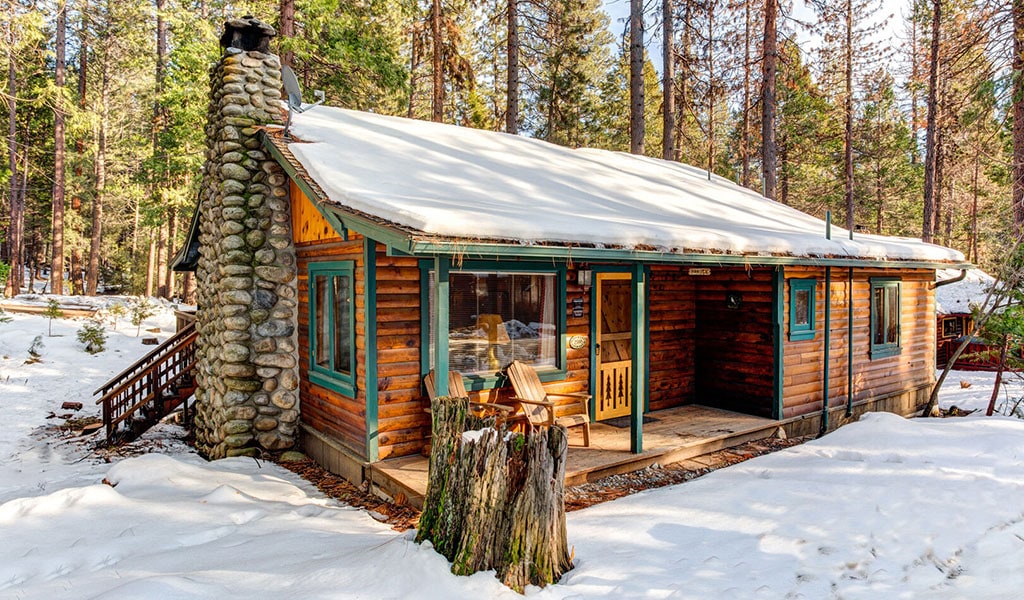
Yosemite’s winter lodging rates trend lower than other times of year, and the nearby towns of Fish Camp and Wawona offer an abundance of options to rest up before and after a day of snowshoeing.
Fish Camp offers its own set of vacation cabin rentals as well as full-service Tenaya at Yosemite, a four-diamond resort set in the Sierra National Forest. Tenaya leans into winter with numerous outdoor activities including ice skating, sledding, and complimentary snowshoe rental to guests.
Wawona has many winter vacation rentals on offer, including 125 cozy, fully-equipped cabins from The Redwoods in Yosemite. Many of the cabins are pet-friendly and some even offer amenities including hot tubs and EV chargers.
Toast and Dine
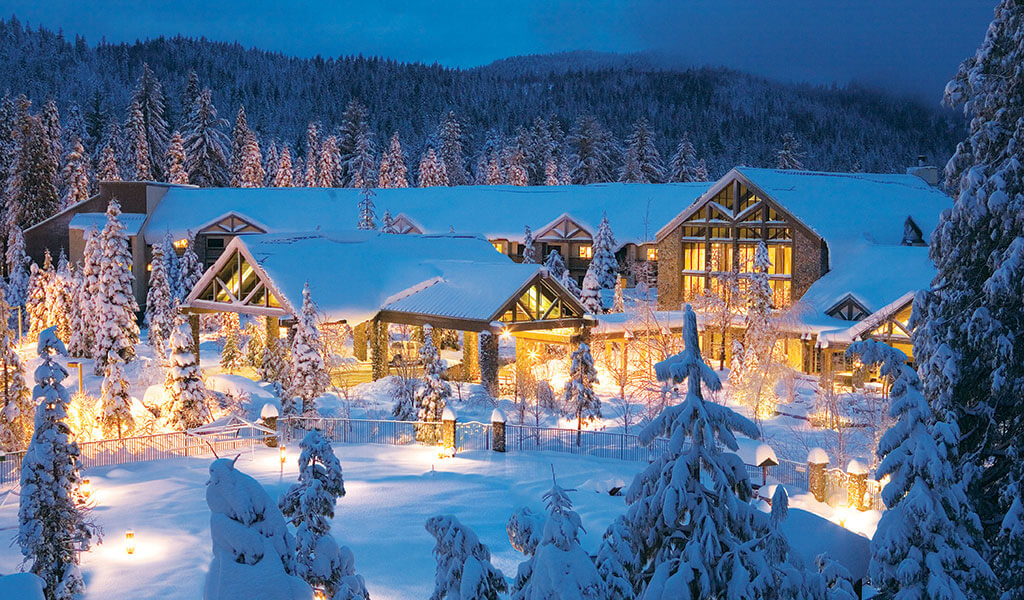
Celebrate your accomplishment with local dining options ranging from family-friendly to fun for two. Tenaya at Yosemite has Jackalope’s Bar & Grill, and Embers, Tenaya’s signature restaurant for finer dining.
The Wawona Hotel Dining Room is a throwback classic, serving hearty mountain fare in an old-timey, Victorian ambiance and setting. The restaurant is open mid-December through the New Year; if your snowshoe trip falls within this period, don’t miss the Wawona Hotel.
Treetop Tips
- Giant Sequoias thrive in a very specific climate: a narrow, 260-mile strip of mixed conifer forest along the western slope of the Sierra Nevada mountains at elevations between 5,000 and 7,000 feet.
- The reason there are old-growth Giant Sequoia groves to visit today is that the trees are not good for construction. Even though the standing trees appear immortal, milled lumber from them is relatively brittle, and very few were felled in the day.
- When snowshoeing the Mariposa Grove, avoid treading on cross-country ski tracks to keep them smooth running. Nordic skiers will appreciate your trail-savvy!
- Check out our Yosemite Winter Travel Tips for more info on road conditions and winter driving, what to pack, and more.

